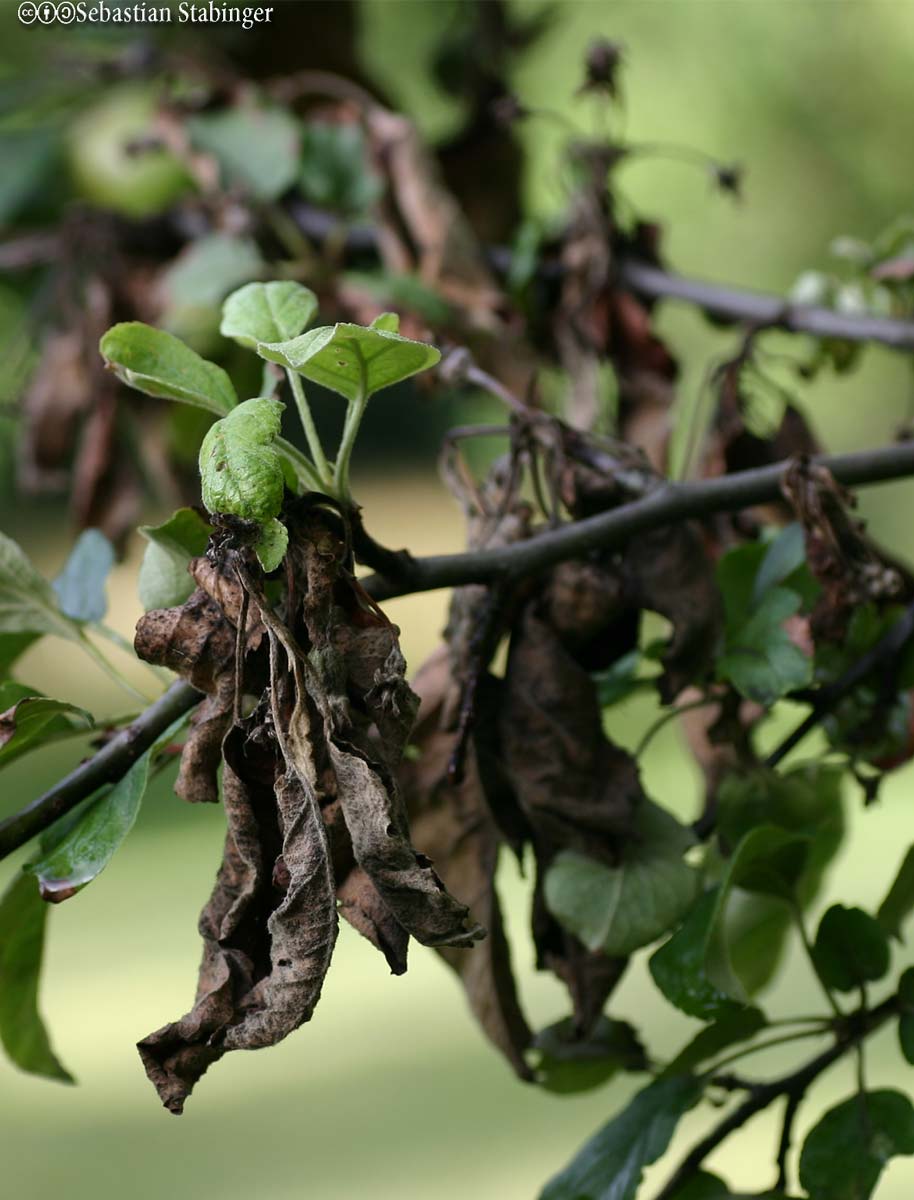
A bacterial disease, fireblight affects only members of the rose family. The infection enters through the blossoms, then spreads by pollenizing insects and splashing water from rain or sprinklers. Fire-blight is favored by temperatures above 60°F and high humidity caused by rain, dew, fog, or irrigation. The bacteria survive in blighted twigs and cankers.
Pear and quince are most susceptible; apple, crabapple, pyracantha, hawthorn, spirea, cotoneaster, toyon, and mountain ash are know to be damaged.
Damage:Leaves, shoots, and developing fruit wilt and blacken as if scorched by fire. Dark, sunken cankers may form in large branches.
Control:Streptomycin. fungicides, Pruning.
Notes:Prune off diseased growth, making cuts at least 6 inches below the infection on the smaller branches, at least 12 inches below blighted areas on the larger limbs. After each cut, disinfect pruners in a solution of nine parts water to one part bleach or rubbing alcohol. Apply a fungicide or streptomycin when about 10 percent of the flowers are in bloom; repeat at 4 or 5 day intervals until bloom ends.



